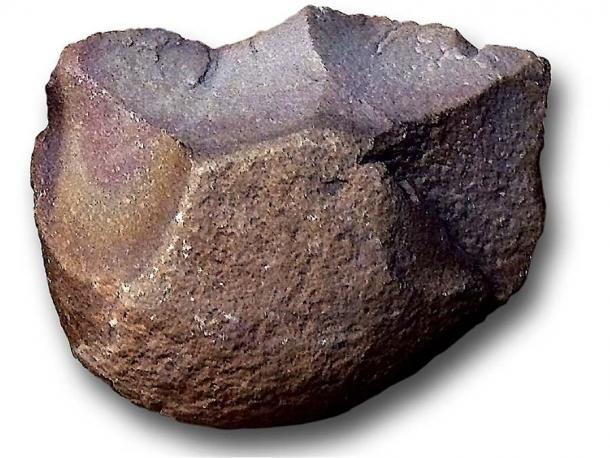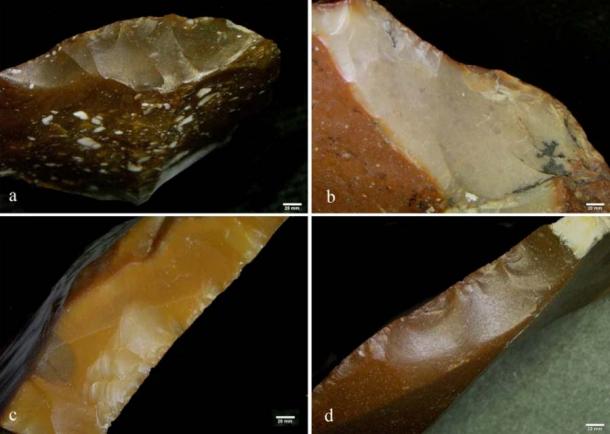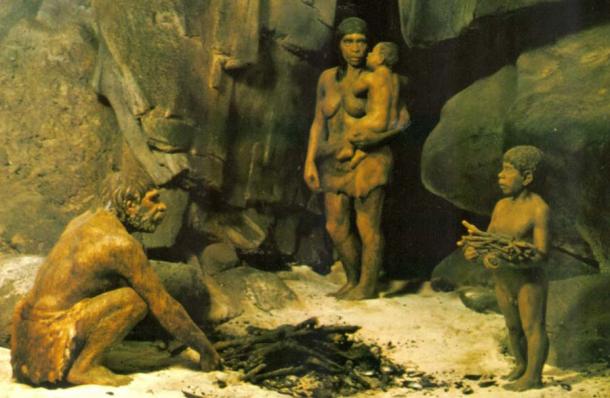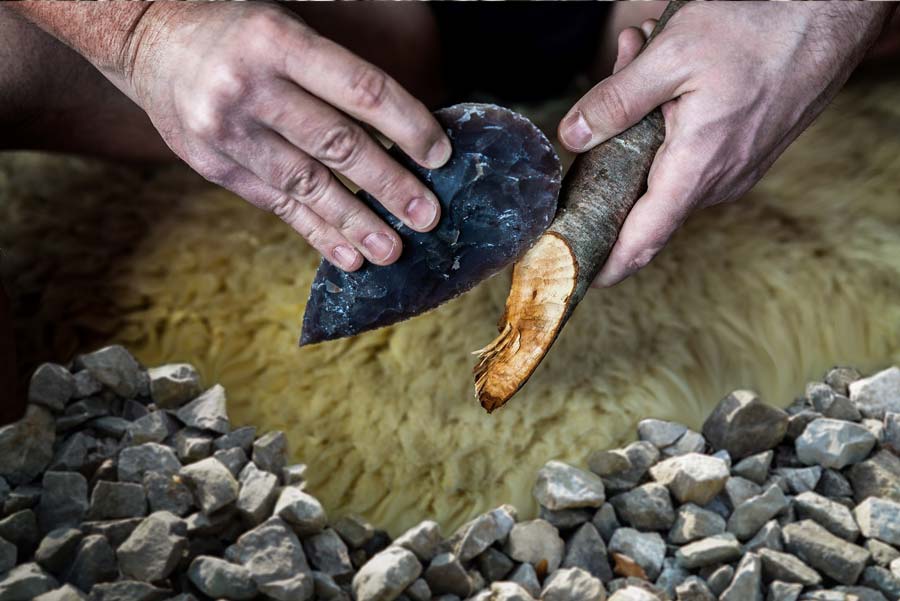Archaic Humans Reused Old Tools To Stay Connected With Their Ancestors
Many of the stone tools that are found during archaeological digs at prehistoric sites show signs of having been reused. In fact, there is a typical pattern that seems to repeat itself time and time again. Tools will be made, used, and discarded once they begin to lose their edges or otherwise become ineffective. Then, a while later, the tools will be rescued, possibly fixed up, and used again for as long as they remain in decent shape.
This pattern is pervasive enough that it calls for an explanation, and a team of scientists from Tel Aviv University in Israel and Sapienza University in Rome have provided one in a study just published in the journal Scientific Reports. Based on a detailed study of 500,000-year-old artifacts found at the Revadim archaeological site in the southern section of Israel’s Coastal Plain, they conclude that intergenerational respect and a sense of nostalgia motivated the reuse of tools by archaic Lower Paleolithic era humans.
"Why did prehistoric humans collect and recycle actual tools originally produced, used, and discarded by their predecessors, many years earlier?" Tel Aviv University archaeologist and study co-author Bar Efrati asked rhetorically, in a TAU press release that discusses this new study. "Scarcity of raw materials was clearly not the reason at Revadim, where good-quality flint is easy to come by. Nor was the motivation merely functional, since the recycled tools were neither unusual in form nor uniquely suitable for any specific use."
The best explanation for the reuse, Efrati and his colleagues say, is that the tools had sentimental value within the cultures that made and used them. Recycling and reusing old tools would have been a way to honor and remember the generations that came before, preserving ancestral connections that might otherwise be forgotten.

Homo erectus, who are classed as archaic humans, living at the Revadim site in Israel, made new tools that were sharper, easier to handle, and generally more sophisticated than the earlier blunter, bulkier Oldowan stone chopper shown here. Oldowan choppers like this one only went “extinct” about one million years ago. (Locutus Borg / Public domain)
Archaic Humans and Tool Evolution: Oldowan to Acheulian
The Revadim archaeological field is located 25 miles (40 kilometers) south of Tel Aviv. This open-air site was occupied by the archaic human species Homo erectus, from approximately 500,000 to 300,000 years ago.
This species was responsible for the creation of the Acheulian toolmaking culture 1.76 million years ago, and they continued to manufacture and use Acheulian tools right up to the time they disappeared from the fossil record. Acheulian tools were notably more complex and sophisticated than the tools associated with the Oldowan culture that preceded it, showing that Homo erectus was an inventive species with advanced intellectual capacities.
- Ancient Precious Stone Ring Found In Israel: Cure For Hangovers?
- Jawbone of Earliest Modern Human Outside of Africa Discovered in Israel
For the purposes of this new study, the Israeli and Spanish archaeologists analyzed 49 Acheulian flint tools excavated from a Revadim sediment layer that was approximately 500,000 years old. They were particularly interested in studying the patina of the objects, which is the label given to the chemical coating that forms on flint tools when they’re exposed to the open air for an extended period of time.
When flint tools are recycled after being abandoned, they will actually acquire a second chemical coating in addition to the first. This is what allows scientists to determine that such tools were used at two different points in time.
Looking at the tools under a microscope, the scientists were able to identify two separate sets of edges, confirming they’d been recycled sometime after they’d originally been discarded. A detailed analysis proved they’d been used for cutting and chopping originally, but for less demanding tasks such as scraping leather or animal flesh when they were used again.
This suggests that care was being taken by the tool makers’ ancestors to make sure these treasured artifacts would not be damaged, reinforcing the idea that they had sentimental value.

The different minimal shaping methods used for the creation of new edges on reused broken tool flakes made by archaic humans living at the Revadim site in Israel. (Scientific Reports)
More evidence supports this thesis. While the tools had been reshaped somewhat before being reused, the reshaping procedures employed were actually quite minimal. Also, the various nicks and scars the tools had picked up from their original usage were not repaired, again suggesting that the generation that reused them didn’t want to change their appearance much at all.
Study co-author Ran Barkai, another Tel Aviv University archaeologist, outlines a hypothetical scenario that might explain how an old, discarded tool might come to be reused.
"Imagine a prehistoric human walking through the landscape 500,000 years ago, when an old stone tool catches his eye," he began. "The tool means something to him—it carries the memory of his ancestors or evokes a connection to a certain place."
"He picks it up and weighs it in his hands,” Barkai continued. “The artifact pleases him, so he decides to take it home. Understanding that daily use can preserve and even enhance the memory, he retouches the edge for his own use, but takes care not to alter the overall shape—in honor of the first manufacturer."
It should be noted that the sediment layer that produced the repurposed Acheulian tools also contained many tools that had been made from scratch. This means that Homo erectus tool makers were busy and active at that time, so no one would have been forced to salvage old tools simply because they had no access to anything newer.

This caveman diorama, housed at the Chicago Field Museum, suggests that archaic humans weren’t really that different from later hominins, as recent research has increasingly shown. (Field Museum)
Maybe Archaic Humans Weren’t So Different After All
Much of what archaeologists know about archaic species of humans comes from the study of the fossilized bones and stone tools they left behind. In most instances, this type of evidence doesn’t reveal anything at all about what was going on in the minds of archaic men and women. Fossilized skulls can demonstrate brain size, but that isn’t enough to draw any firm conclusions about the intellectual abilities or emotional life of these forerunners to modern humans.
That’s why this new analysis is such an intriguing outlier. Assuming the Israeli and Spanish archaeologists are correct in their reasoning, it seems Homo erectus experienced feelings and emotional reactions that are easily comprehensible to the modern observer.
- Wing Bone Indicates Swan Shamanism Could Be 420,000 Years Old!
- Half-a-million-year-old Feeding Ground for Homo Erectus Found Near Tel Aviv
“The more we study early humans, we learn to appreciate them, their intelligence, and their capabilities,” Barkai said in summary of his team’s findings. “Moreover, we discover that they were not so different from us. This study suggests that collectors and the urge to collect may be as old as humankind. Just like us, our early ancestors attached great importance to old artifacts, preserving them as significant memory objects—a bond with older worlds and important places in the landscape.”
In a sense, the archaic tool recyclers from Revadim were creating bonds with the past in the same way that archaeologists do now. While ancient artifacts rediscovered in the 21 st century aren’t put back into use, they are carefully studied and preserved before being put on display in museums, where anyone can come to see them and learn more about the human ancestors who created them.
Top image: A new study has revealed that archaic humans reused tools at the Revadim Israel dig site as a way of honoring and remembering their ancestors in a "sentimental" way. Source: Andy Ilmberger / Adobe Stock
By Nathan Falde


















Comments
Another pile of malarky full of assumptions on ancients were honoring their ansestors when they were merely taking advantage of found previously used stones. because they roamed a lot, there is probably zero relationship between usuers 1 and 2 and 3 or 4.
The study is another attempt to apply current social patterns to the ancient past without any supporting evidence… yes the tools were rechipped but hardly because this tool was their grandfathers! It’s on he par with the current trend to ascribe any scratched rock or surface as “art” or kids having fun hand printing surfaces as conscious art. Next we’ll be looking at fossilized foot prints as evidence of ritual dance.
The ancients involved were roving hunter gatherers existing more by accidental discovery than by premeditated actions.